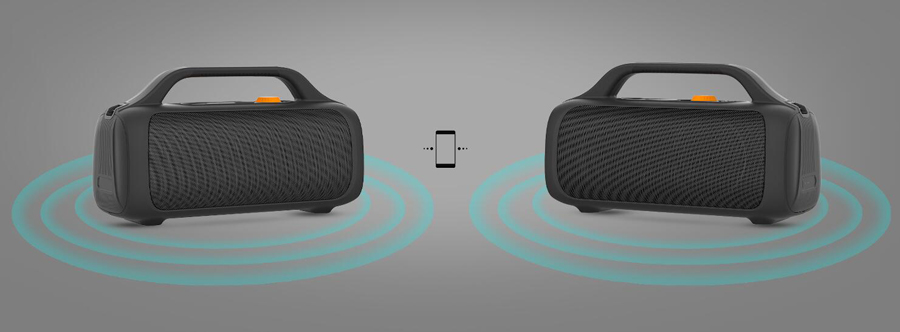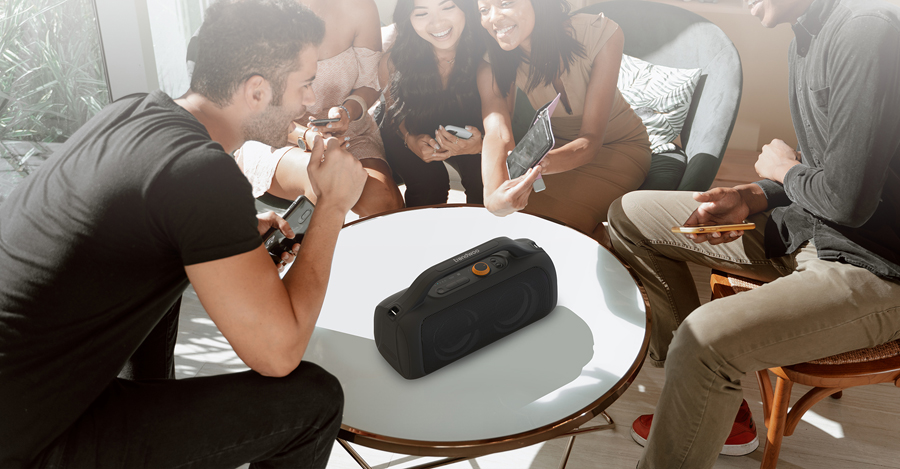Speakers are one of the most popular audio devices, probably second only to headphones. They come in all shapes and sizes, and have their place in our cars, homes, offices, etc. They each have their own purpose, and depending on that purpose, it has a specific build and size. You might think the market offers anything you might need, but it's not surprising if you can't find the speaker you're looking for, especially if you're looking for one for your car.
One of the easiest but least applicable solutions to this problem is to use some basic materials, some basic tools, a subwoofer or two, and build a speaker yourself. This can be great if you think about it, not only because the speaker box is the perfect size for your car, living room or anywhere else, but also because you will learn something new, have fun making the speaker box and save a lot of money.
If you're with us, we'll show you what types of speaker boxes are available and explain to you step-by-step how to build your own speaker box in a few days. Don't worry, it's not difficult, even beginners can succeed if they try.

An infinite baffle is not actually a real box, it's more like a board with holes in it where you can place your woofer. It's perfect for the trunk of a car, because the trunk itself acts as the enclosure, isolating the sound from the back of the speakers. These "boxes" are the easiest to make, take up the least amount of space, and have a flat frequency response. They require less power than others and produce minimal sound distortion. However, they make it difficult to separate the front and rear sound waves, and the woofer is completely damaged.
Sealed enclosures are the smallest and easiest to build. They consist of an enclosed sealed box and a subwoofer, and are perfect if you need deep bass to fill your car or apartment. They also require more power than other enclosures, so it is recommended to use them with an amplifier for best performance.
These enclosures are called vented or ported because they have ports/vents to enhance (boost) the bass response. This is the most popular enclosure type because it offers the most powerful sound, although it can be one of the most difficult to build and takes up more space. Speakers with ported/vented enclosures can provide deeper bass than speakers with sealed enclosures.
With a bandpass enclosure, the speaker (woofer) is concealed in a box with two chambers, and the sound comes out through one or more ports. These enclosures can have one port (4th-order bandpass), two ports (6th-order bandpass) or three ports (8th-order bandpass). These speakers provide loud sound in a limited frequency range. However, they are very efficient and perfect for hard rock music, hip hop or reggae, although they can get a little rowdy. They are also extremely difficult to build and can take up a lot of space.

No matter what types of speaker boxes you're building, you'll need the same materials, and as you can see, everything on our list is easily accessible and relatively affordable. Of course, if you have the necessary tools in your garage, it will end up costing less, but if you don't, try borrowing them from a friend or neighbor.
Basically, the essential things to build any type of enclosure are a jigsaw, a table or circular saw, and a power drill. You must also obtain a piece of medium density fiberboard ( MDF ), which is the best choice for building these boxes. The next things you will need are different kinds of screws, glue or some kind of adhesive suitable for wood materials, and some kind of insulation, such as fiberglass or filler. In addition, you may need a piece of speaker cloth for a final touch and some brackets to secure and reinforce the box.
Before we start, we have to say that the shape and size of the enclosure affects and determines the sound quality and its color. They define how much power it needs and how deep the bass is. It is impossible to build any speaker without mathematical calculations, and it is very important to complete them accurately, because even small defects can affect the performance, especially with vented boxes.
When choosing your new woofer/subwoofer based on your needs and musical tastes, you should pay attention to the manufacturer's recommendations regarding enclosure size and shape. Before you buy anything, think about where your new speaker enclosure will be installed and what it will be used for. Once you have defined the characteristics of the subwoofer and enclosure, you can move on to the next step.
Before you start cutting, make a model of the future box. You can do this on a computer or draw it manually with a pen and a piece of paper, but the model should be present. Calculate the dimensions of the box according to the manufacturer's recommendations. If you need more help, you can type Re Box Calculator into your browser, and this program will make it easier for you. However, you should determine the external box dimensions: the minimum depth of the speaker box (add 2 inches to the depth of the subwoofer) and the minimum height and width (measure the diameter of the subwoofer). In addition, do not forget the internal dimensions and the total box volume. To determine the internal dimensions, it should be no problem to remove the thickness of the wood from the external dimensions. The volume can be calculated using the following formula: Height x Depth x Width.
Once you have completed your calculations, you can start cutting the wood into pieces, then gluing and screwing them together. Measure the diameter of the woofer and cut holes in the front panel of the speaker. You should also drill a hole in the rear panel, as you will need to run some wires through it to connect the speaker to the power supply. You can reinforce each corner of the wooden parts because it will make the box stronger and more durable, especially in mass production.
The next step is to put all the pieces together, but before that, it is better to smooth the rough edges because every deviation will affect the performance. After that, you can use glue/adhesive/caulk and start gluing the pieces together. It is very important to let the adhesive dry completely for at least 24 hours.
You may also need to place one or two layers of insulation (fiberglass or something similar) to smooth the speaker walls so that air can flow smoothly in and out of the cabinet without affecting the overall performance.
Don't leave the box like this. In addition to being stable and durable, it should look good, so it'll be nicely painted. If you're really in the mood, you might also consider getting some cloth or carpet to cover the speaker surface. For this, you will also need some calculations, markers and a scalpel.
Copyright:@2020-2021
Comments Please sign in or sign up to post.
0
0 of 500 characters used